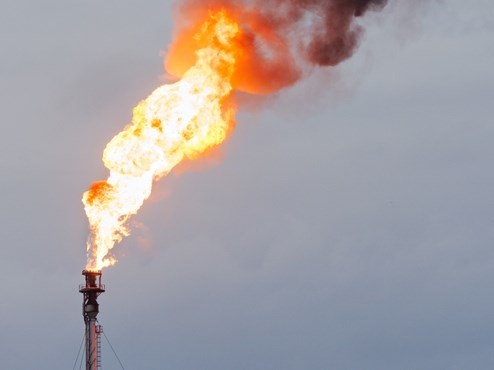sa���ʴ�ý will adopt aggressive methane reduction targets for sa���ʴ�ý’s oil and gas sector, with Alberta, sa���ʴ�ý and Saskatchewan most affected.
Just two months ago, the Canadian government announced its new plan to reduce overall methane emissions by more than 35% by 2030, compared to 2020 levels.
“This will exceed the Global Methane Pledge target of 30% that sa���ʴ�ý signed on to last year,” the government noted.
Just two months later, on November 10, at COP27, Canadian environment Minister Steven Guilbeault doubled down. He announced that sa���ʴ�ý’s new methane reduction framework will include a 75% reduction by 2030 relative to 2012 levels for the oil and gas sectors.
“This proposed framework here is specific to the oil and gas sector,” said Jan Gorski, the Pembina Institute's director of oil and gas. “These aren’t draft regulations yet, but it gives us a sneak peek at what will be in those regulations and lays out a really ambitious proposed framework for what those rules will look like.”
The new federal targets for methane reductions in the oil and gas sector are consistent with sa���ʴ�ý's own targets under CleanBC of a 75% reduction by 2030 from 2014 levels.
“We welcome sa���ʴ�ý’s deep commitment and ambition in tackling methane emissions,” said John Kerry, Special Presidential Envoy for Climate, who joined Guilbeault at COP27 on making pledges to reduce methane emissions.
The U.S. too aims to try to get methane emissions from its oil and gas sector down by 75%.
“sa���ʴ�ý is already on track to reduce methane emissions from the oil and gas sector by 75% by 2030, which is just about the most ambitious target in the world,” Guilbeault said.
Indeed, the sa���ʴ�ý West Foundation in October released a report that noted Western Canadian oil and gas producers had already made great strides in reducing methane emissions.
“Over the past five years, methane emissions from the upstream oil and gas sector in Western sa���ʴ�ý have decreased by around 44% – ahead of schedule and with further decreases projected by 2025,” the report noted.
As a greenhouse gas, methane has a much higher global warming potential than CO2, though it does not persist as long in the atmosphere. sa���ʴ�ý’s oil and gas sector accounts for about 35% of sa���ʴ�ý’s methane emissions, with the next biggest sources being agriculture (30%) and waste (28%).
All Western provinces have their own methane emission reduction targets of between 40% and 45%, with baseline years of 2014 or 2015. Saskatchewan exceeded its target with a 60% reduction by 2021, according to the sa���ʴ�ý West Foundation report. Alberta had achieved a 33% reduction as of 2020. sa���ʴ�ý achieved a 22% reduction.
Gorski cautioned that it’s hard to quantify methane reductions, because measuring and monitoring is still lacking.
“Those numbers are really based on the current inventory, and we know that there’s pretty significant issues with the way the methane emissions are counted,” Gorski said. “So while I do believe that there’s progress, I think it’s still very hard to assess quantitatively exactly how much progress (has been made) across sa���ʴ�ý.”
Better measuring, monitoring and reporting will be required to determine whether the oil and gas sector is meeting the targets being set.
In sa���ʴ�ý, the sector has reduced methane emissions in the oil and gas sector through things like green completions and by replacing valves activated by natural gas pressure with electric actuators.
Under the new federal regulations, a lot more will need to be done to tighten up natural gas infrastructure. All natural gas facilities, including individual wells, will be required to have fugitive emission management plans and monthly inspections.
“Once a suspected leak is detected, the operator would be required to confirm and fix the leaking component immediately or if not feasible, within 30 days,” the Environment and Climate Change sa���ʴ�ý says.
And oil and gas producers in Alberta and Saskatchewan will see new prohibitions against things like venting and flaring natural gas from oil wells.
Since natural gas is often a byproduct of conventional oil production, oil producers will often simply vent off the gas, or burn it off through flaring.
Natural gas processing plants also use flaring to get rid of impurities in the gas. Flaring is considered preferable to venting, since the CO2 that burning produces is not as bad as methane. The new framework would also have guidelines for limiting flaring and encouraging conservation — i.e. capturing the gas.
“Requiring them to capture that gas is a really important rule,” Gorski said. “The other one is storage tanks, which we do have in sa���ʴ�ý as well. These are more stringent venting limits for storage tanks.”
Brad Hayes, president of oil and gas consulting firm Petrel Robertson Consulting, doesn’t think the new methane regulations will be overly onerous or costly for the Canadian industry.
“I don’t think that’s going to change much with the oil and gas industry,” he said. “There’s been a really strong push in the last few years with a variety of technologies both to detect and close down leaks and also to change procedures at gas plants and things like that to ensure that less leakage occurs during normal operations.”
Nor does Gorski think they will put the Canadian sector at a disadvantage to the U.S., which is also adopting stringent new methane regulations for the oil and gas sector.
“We still have to see the actual regulatory impact to see what the costs will be,” Gorski said. “But given that our major trading partner is also moving forward with ambitious rules around methane, I don’t think there’s a significant concern around competitiveness here.”
According to the Pembina Institute, methane emissions from the Canadian oil and gas sector was estimated to be the equivalent of 60 million tonnes of CO2 in 2012. So a 75% reduction would mean a reduction of 45 million tonnes of CO2 equivalent.



